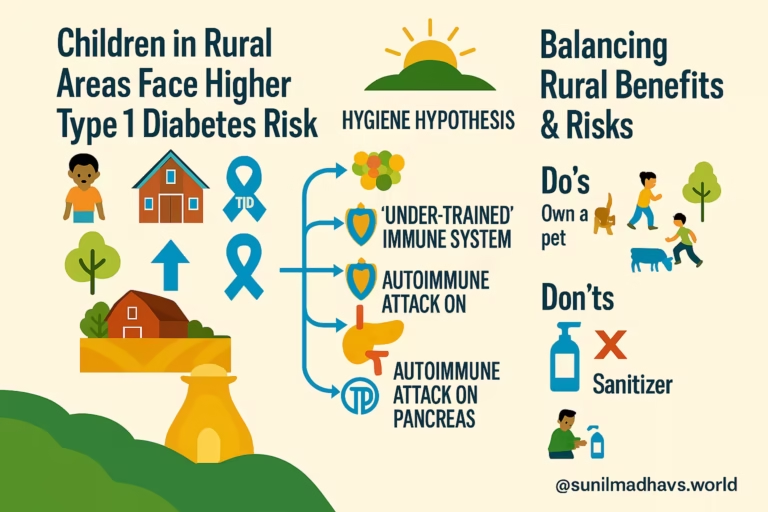Higher Rates of Type 1 Diabetes Linked to Rural Areas in Sweden, Study Finds
People living in certain rural regions of Sweden may face a greater likelihood of developing type 1 diabetes, according to new research that will be presented at the upcoming European Association for the Study of Diabetes (EASD) Annual Meeting.
The study analyzed national data on type 1 diabetes diagnoses from 2005 to 2022, focusing on individuals 30 years old or younger. Using the Swedish National Diabetes Register, researchers identified 21,774 cases (57.7% male, average diagnosis age of 13.6 years).
Geographic Clusters Identified
Researchers discovered four distinct “high-risk” clusters — all located in rural areas — where the number of type 1 diabetes cases was significantly higher than expected. In contrast, regions with lower-than-expected rates were exclusively found in Sweden’s largest urban centers.
The rural high-risk zones were characterized by:
-
Forested landscapes
-
Agricultural land
-
Abundant lakes and rivers
The urban low-risk areas tended to be open spaces not used for farming.
Influence of Early-Life Residence
When the team examined where participants lived during their first five years of life, similar patterns emerged. They identified 11 rural clusters with elevated risk and 15 urban clusters with reduced risk.
Notably, about 24% of participants moved to a different municipality between birth and diagnosis.
Possible Explanations
Lead researcher Samy Sebraoui, PhD, RN (University of Gothenburg) noted that these findings suggest geographic location — and possibly environmental factors — influence the risk of developing type 1 diabetes.
One hypothesis relates to early-life exposure to infections. The hygiene hypothesis suggests that limited exposure to common childhood infections can hinder immune system development, increasing susceptibility to autoimmune diseases such as type 1 diabetes. Since viral infections may be more common in urban settings, this could partly explain their lower rates.
However, Sebraoui emphasized that not all countries show the same rural–urban pattern. In some places, rural incidence is higher; in others, no difference is observed, suggesting region-specific environmental or lifestyle factors.
Next Steps
The research team plans to further investigate environmental exposures during early childhood that might raise or lower type 1 diabetes risk. They also aim to explore lifestyle and living condition differences between rural and urban populations.
Source: Sebraoui S, et al. Abstract #43. To be presented at EASD Annual Meeting, Sept. 15–19, 2025, Vienna.


